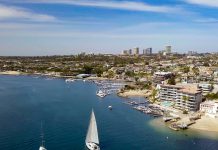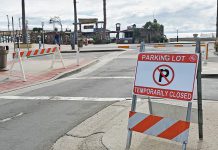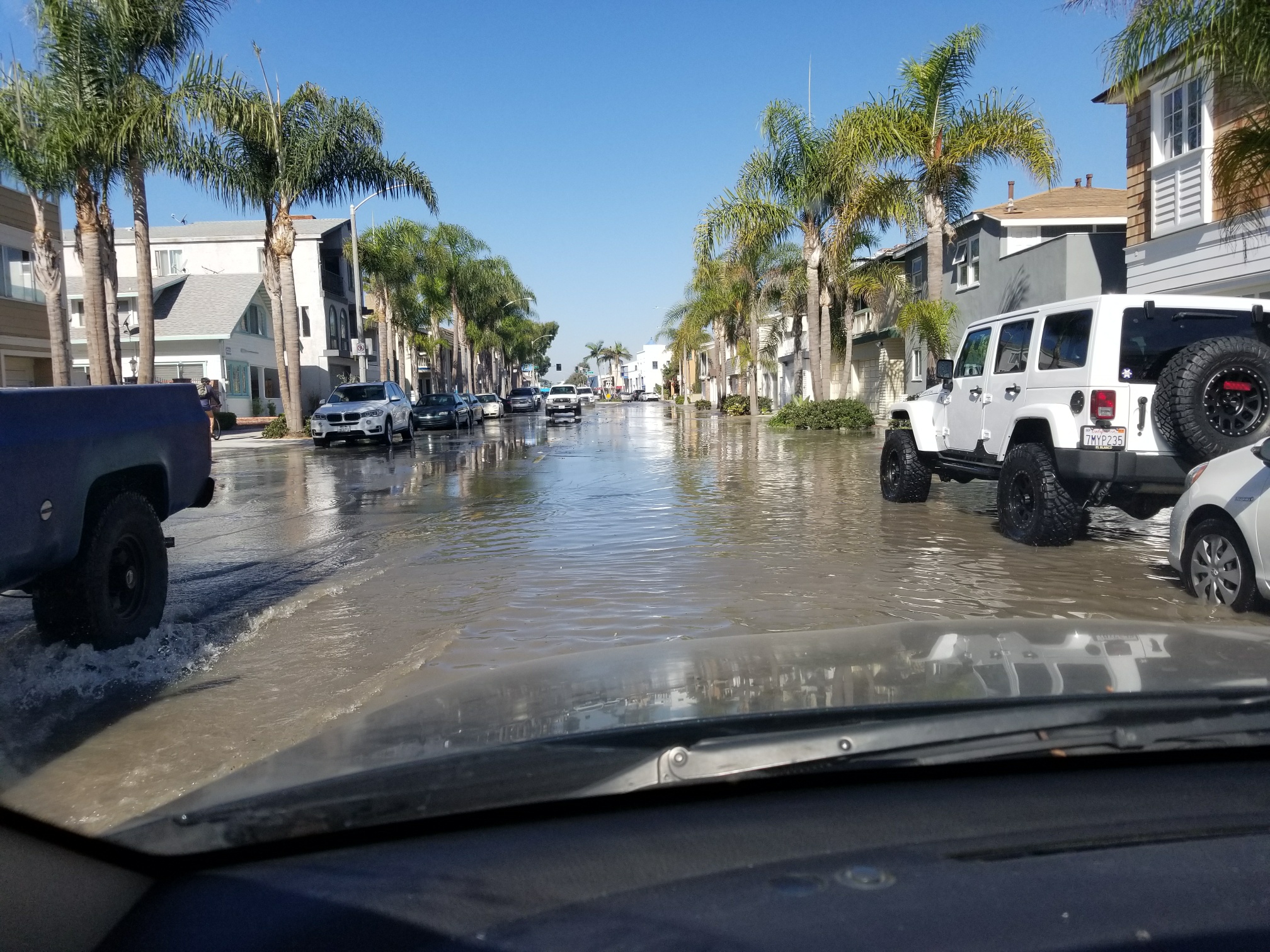
— Photo by Jim Collins ©
“Go with the flow” seems to be the mantra for the city in regards to sea level rise.
Both literally and figuratively, as Newport Beach officials react to sea level rise by both building or capping physical barriers like seawalls and keeping up with the latest science in order to find the best solutions.
Sea level rise was the topic of the night as a panel of officials spoke on the issue to about 130 people Wednesday during Speak Up Newport’s monthly meeting.
Newport Beach residents packed into the Civic Center Community Room to hear Community Development Deputy Director Jim Campbell, Assistant City Engineer Bob Stein, and Brett Sanders and Jochen Schubert with UCI FloodRISE project, talk about the issue.
“Sea level rise… It’s happening,” Campbell said. “We need to adapt.”
So the question now is: How high and when? In Campbell’s opinion, the answer is still uncertain.
There are high and low range predictions, he explained, but more information is necessary. They need to work on regulations and plans to implement over time, he said.
The city is using the “low range” sea level rise projections, which is anywhere between one and a half feet to three and a half feet by 2100.
“We’re doing that purposely because it’s enough (precaution) for (at least) 75 years,” Campbell said.
Using the low range projections should mean Newport Beach is “safe” for the next three-quarters of a century, but even then, there is still uncertainty, he added.
“But, as a civil engineer, we really need to be looking at the extreme event to provide protection,” as best as possible in the long run, Stein pointed out.
The most extreme possibility comes from a 2016 model that estimated as much as five and a half feet (66 inches) by 2100, Stein explained.
But recent research has made him wonder how extreme that estimate really is, he added.
“Between now and then, we’re going to be vigilant,” Campbell said.
As the science continues to evolve, the city plans to periodically re-evaluate the latest information and adjust accordingly.
“We don’t have as much of a problem out here compared to the East Coast,” said SUN Vice President Ed Selich as he introduced the panel. “But we do have some issues we have to deal with in Newport Beach.”
During his time as mayor in 2015, Selich attended a Rising Tides conference that really opened his eyes to sea level rise.
There has been a lot of work on the issue locally for several years now, he pointed out.
In recent years the city formed the Tidelands Management Committee, raised or capped seawalls, and even considered a tide gate at the harbor entrance.
As far as local policy on the issue goes, Appendix A in the city’s Local Coastal Program includes the strategy on sea level rise, the purpose of which is “to ensure that sea level rise is adequately addressed in the review of coastal development permit applications and in future updates and amendments to the city’s LCP.”
Campbell calls it an “IOU” to the California Coastal Commission.
“It is really an incomplete document,” he noted.
There are a number of guidelines outlined in the six page document, but as the city was getting their LCP certified the Coastal Commission released a guidance policy that requires a lot of analysis, Campbell explained.
“We’re going to have to do a heck of a lot more,” Campbell said.
And the city is prepared to do that, he added, they need a comprehensive plan.
“We also want to implement short-term and long-term solutions to adapt,” Campbell said.
Climate change and sea level rise have the potential to significantly threaten many resources within the city’s coastal zone.
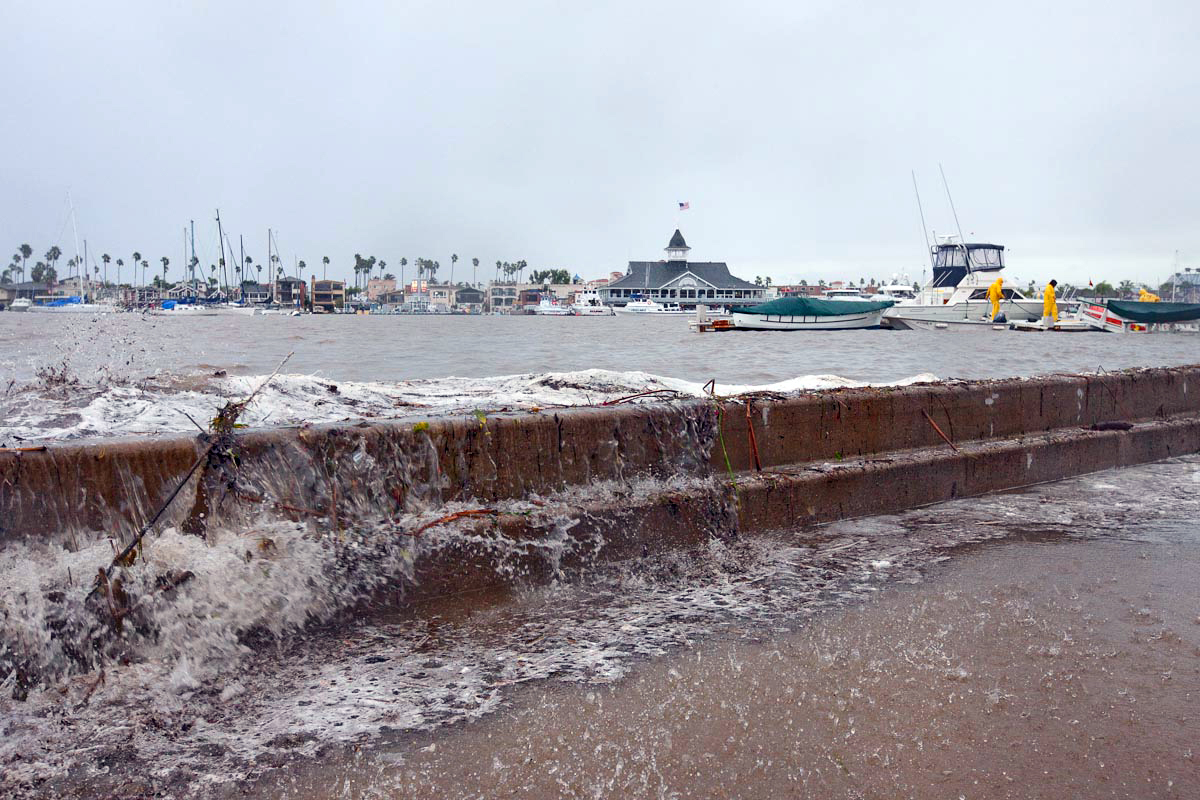
— Photo courtesy the city of Newport Beach ©
Given that the width of the city’s beaches varies between 50 and 600 feet, a sea level rise of as little as six inches may have a negative impact on the low-lying areas around Newport Bay that are not protected by bulkheads and seawalls, according to the LCP.
As far as potential plan of action, the city has a few ideas, Campbell said, including: Requiring proper siting and maintenance of public and privately owned seawalls; requiring public and privately owned seawalls caps be extended per city standards; revising city standards for new seawall, top-of-seawall elevation and finished floor elevations; studying ways to provide and maintain public access to beaches, docks and piers; and monitoring and replenishing beach sand loss in the harbor and along the ocean.
The city also plans on reviewing the storm drain system on Balboa Island, Stein added.
Stein added a few other options: Long-term partnering with local construction companies, planning for infrastructure improvements and protection of biological resources, and formation of regional development programs.
Bulkheads, docks and piers, and the seawall can be raised, but what about the streets and sidewalks? Campbell queried. New tools are needed, he continued, and there may come a day where they have to compel property owners to take action.
As the sea level rises, so does groundwater, Stein pointed out. This forces authorities to look at bigger scale solutions, some of which may be “expensive and intrusive” in extreme cases, he said.
Adaptation will be costly and painful, Campbell said.
In the extreme case of 66 inches of sea level rise in 2100, then over the next 50 years, it could cost as much as $500 million for 18 miles of public and private seawalls, $100-$200 million each to enhance both stormwater and groundwater control facilities, and about $50 million for annual beach sand maintenance program and another $50 million for three to five feet of fill (around 5 million cubic yards).
“There are some pretty big numbers here,” Stein said.
They also don’t want to over-react by building or mandating costly or unsightly improvements too soon, Campbell said.
Sanders pointed out several recent big flooding events caused by hurricanes across the country. While Newport Beach doesn’t have massive hurricanes, there is “chronic flooding,” he said. Flooding that is happening more and more frequently, he explained.
“Coastal management is critical to the future,” Sanders said.
The storms that created significant flooding in 2005 and 2010 were early warning signs (for future sea level rise) that the city does have low-lying areas and it needs to be closely monitored, Stein noted.
The areas most prone to flooding are, as expected, Balboa Island and Balboa Peninsula. But in the more extreme models, West Newport and areas surrounding Upper Newport Bay would also be impacted, Stein pointed out.
Sanders and the FloodRISE team wanted to develop a model that incorporated specific local flood hazards.
The goal of the research project is to “enhance flood risk planning and policies and to promote cost effective interventions.”
Non-structural approaches (like local policies, early warning systems, and insurance) are the most cost effective, Sanders said, but mixing in structural methods is also important.
Sanders pointed out an “inspirational” solution from Katwijk Beach in the Netherlands. A submerged parking garage under the sand works as a “last line of defense,” but also keeps coastal views intact and beach access.
“I think that this has potential in Southern California,” Sanders said. “I’m not saying this is right for Newport Beach, but it’s the idea that should inspire us.”
For more information, visit speakupnewport.com, newportbeachca.gov/pln/LCP/LCP_Zoning/Appendix%20A%20-%20Sea%20Level%20Rise.pdf, and floodrise.uci.edu
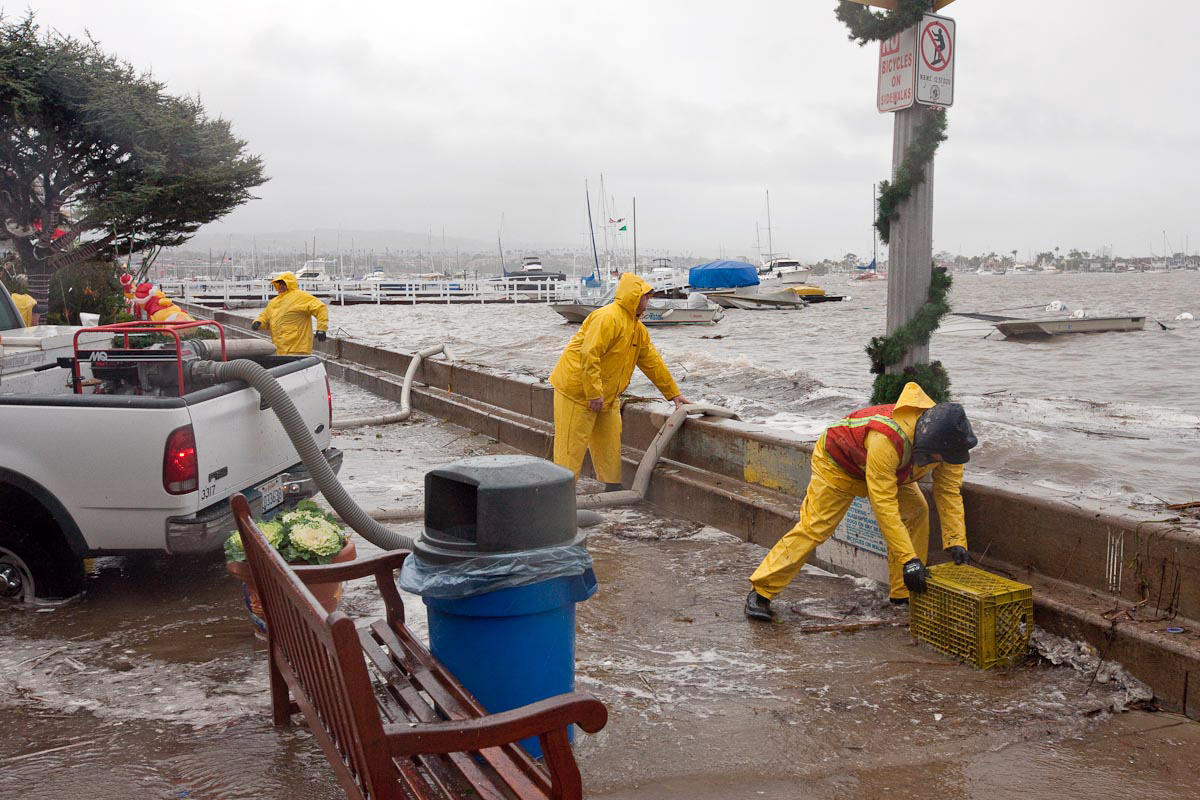
— Photo courtesy the city of Newport Beach ©



